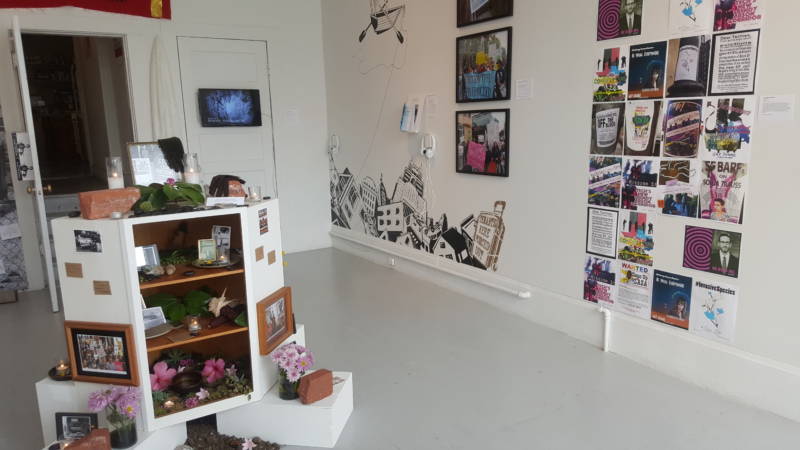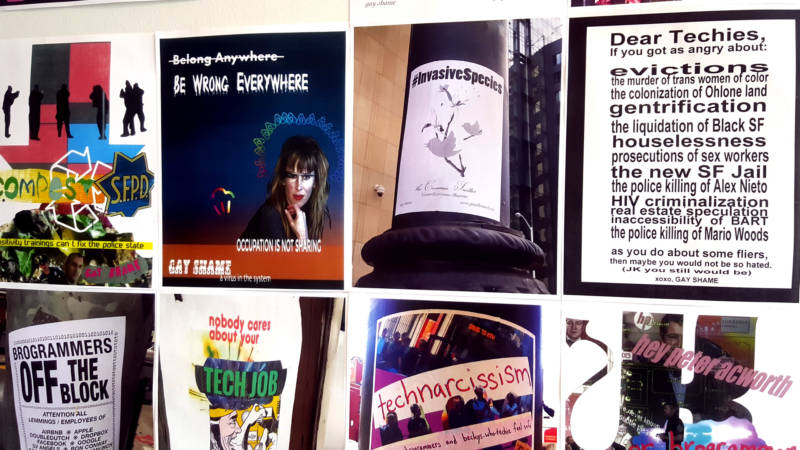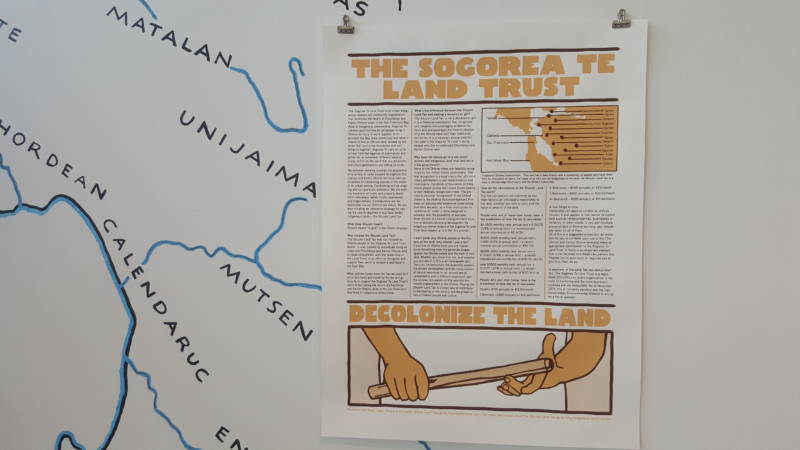Boom: The Art of Resistance isn’t on display in a typical gallery, but in the rented home of an East Oakland resident, Juan Carlos Quintana, a social worker and community member. Bringing together history, video and political protest art, the show is a collaborative effort of both organizations and individuals from around the Bay Area. It serves as a reminder that despite the region’s cultural changes and rising rent prices, a solid crew of artists, activists and organizers are still here resisting — each in their own way.
“The fact that this show isn’t in a typical institutional space feels better,” says curator Leslie Dreyer, an artist and housing rights organizer and advocate. Dreyer first took over the gallery space, then the kitchen area and finally the roof above the house to showcase all of the art involved in Boom.

At first glance, the show feels as though it is taking on too much. Boom serves as a visual archive of Bay Area anti-displacement tactics, featuring over a dozen projects.
How can all these different people, organizations and art be part of the same larger struggle? But as Dreyer says, the many voices at play are intersectional and interconnected. Here’s a glimpse into three projects on display and the tactics they use to fight gentrification:
Leslie Dreyer and the San Francisco Anti-Displacement Coalition (Tactic: Unsanctioned Installation/Tactical Intervention)



